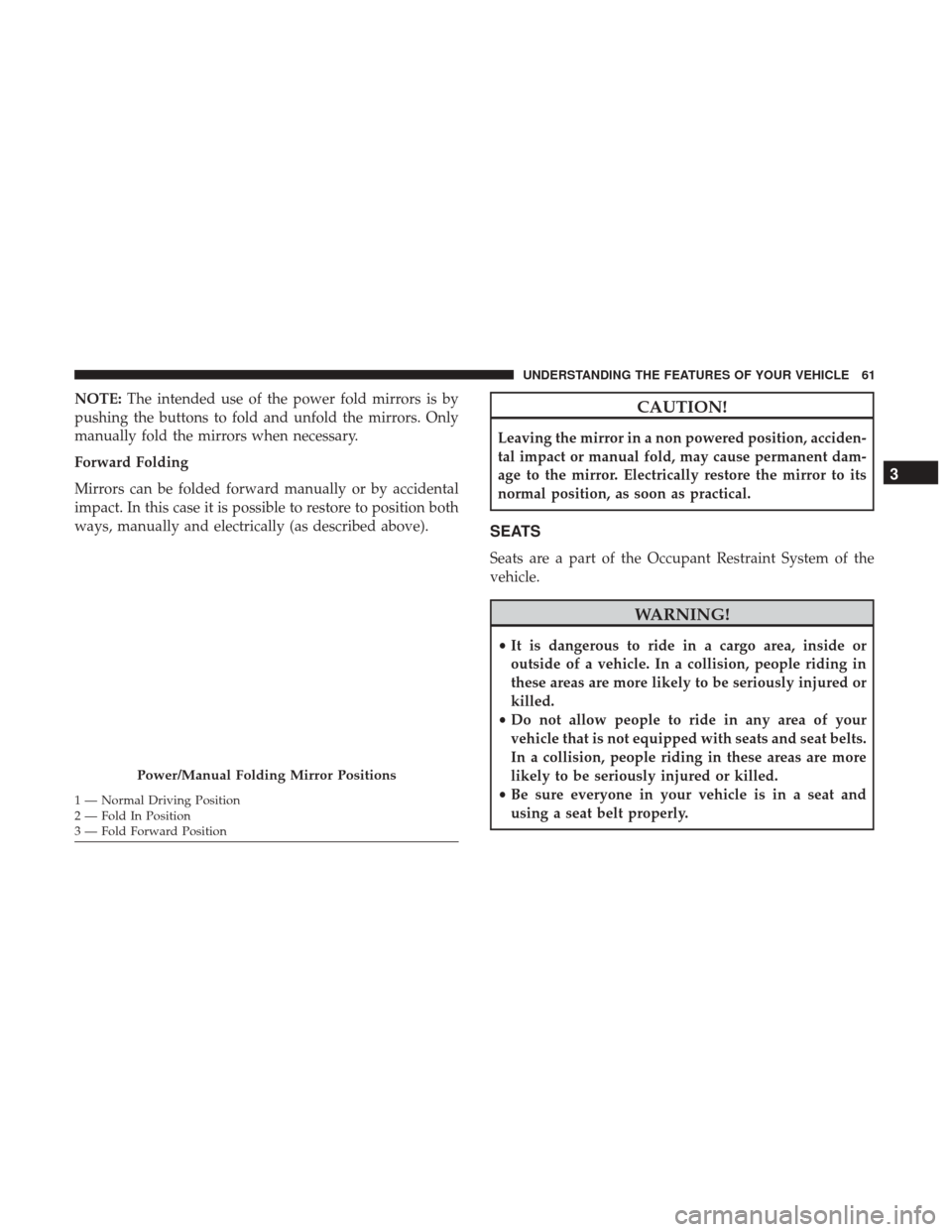Page 28 of 348

5. Position the shoulder belt across the shoulder and chestwith minimal, if any slack so that it is comfortable and
not resting on your neck. The retractor will withdraw
any slack in the shoulder belt.
6. To release the seat belt, push the red button on the buckle. The seat belt will automatically retract to its
stowed position. If necessary, slide the latch plate down
the webbing to allow the seat belt to retract fully.
Lap/Shoulder Belt Untwisting Procedure
Use the following procedure to untwist a twisted lap/
shoulder belt.
1. Position the latch plate as close as possible to the anchorpoint.
2. At about 6 to 12 inches (15 to 30 cm) above the latch plate, grasp and twist the seat belt webbing 180 degrees
to create a fold that begins immediately above the latch
plate.
3. Slide the latch plate upward over the folded webbing. The folded webbing must enter the slot at the top of the
latch plate.
4. Continue to slide the latch plate up until it clears the folded webbing and the seat belt is no longer twisted.
Adjustable Upper Shoulder Belt Anchorage
In the driver and front passenger seats, the top of the
shoulder belt can be adjusted upward or downward to
position the seat belt away from your neck. Push or
squeeze the anchorage button to release the anchorage, and
move it up or down to the position that serves you best.
Positioning The Lap Belt
26 THINGS TO KNOW BEFORE STARTING YOUR VEHICLE
Page 39 of 348

never lean on or sleep against the door, side windows, or
area where the Side Air Bags inflate, even if they are in an
infant or child restraint.
Seat belts (and child restraints where appropriate) are
necessary for your protection in all collisions. They also
help keep you in position, away from inflating Side Air
Bags. To get the best protection from the Side Air Bags,
occupants must wear their seat belts properly and sit
upright with their backs against the seats. Children must
be properly restrained in a child restraint or booster seat
that is appropriate for the size of the child.
WARNING!
•Side Air Bags need room to inflate. Do not lean
against the door or window. Sit upright in the center
of the seat.
• Being too close to the Side Air Bags during deploy-
ment could cause you to be severely injured or
killed.
• Relying on the Side Air Bags alone could lead to
more severe injuries in a collision. The Side Air Bags
work with your seat belt to restrain you properly. In
some collisions, Side Air Bags won’t deploy at all.
(Continued)
WARNING! (Continued)
Always wear your seat belt even though you have
Side Air Bags.
NOTE: Air bag covers may not be obvious in the interior
trim, but they will open during air bag deployment.
If A Deployment Occurs
The front air bags are designed to deflate immediately after
deployment.
NOTE: Front and/or side air bags will not deploy in all
collisions. This does not mean something is wrong with the
air bag system.
If you do have a collision which deploys the air bags, any
or all of the following may occur:
• The air bag material may sometimes cause abrasions
and/or skin reddening to the occupants as the air bags
deploy and unfold. The abrasions are similar to friction
rope burns or those you might get sliding along a carpet
or gymnasium floor. They are not caused by contact with
chemicals. They are not permanent and normally heal
2
THINGS TO KNOW BEFORE STARTING YOUR VEHICLE 37
Page 57 of 348

UNDERSTANDING THE FEATURES OF YOUR VEHICLE
CONTENTS
�MIRRORS ..............................58
▫ Inside Day/Night Mirror — If Equipped ......58
▫ Outside Mirrors ........................58
▫ Outside Mirrors Folding Feature ............58
▫ Power Mirrors — If Equipped ..............59
▫ Heated Mirrors — If Equipped .............59
▫ Power Folding Mirrors — If Equipped .........59
� SEATS ................................61
▫ Manual Front Seat Adjustments ..............62
▫ Suspension Seat — If Equipped .............65
▫ Swivel Seat — If Equipped ................65
▫ Flap On Bench — If Equipped ..............67
▫ Underseat Storage Tray (Driver Side Only) — If
Equipped .............................68 ▫
Heated Seats — If Equipped ...............68
▫ Head Restraints ........................69
▫ Adjustable Armrests — If Equipped ..........71
� TO OPEN AND CLOSE THE HOOD ...........72
� LIGHTS ...............................74
▫ Multifunction Lever .....................74
▫ Headlights ............................74
▫ Dimmer Controls .......................75
▫ Ambient Light ..........................75
▫ Daytime Running Lights — If Equipped .......75
▫ Battery Saver ...........................75
▫ Fog Lights — If Equipped .................76
▫ Turn Signals ...........................76
▫ Parking Lights .........................763
Page 63 of 348

NOTE:The intended use of the power fold mirrors is by
pushing the buttons to fold and unfold the mirrors. Only
manually fold the mirrors when necessary.
Forward Folding
Mirrors can be folded forward manually or by accidental
impact. In this case it is possible to restore to position both
ways, manually and electrically (as described above).CAUTION!
Leaving the mirror in a non powered position, acciden-
tal impact or manual fold, may cause permanent dam-
age to the mirror. Electrically restore the mirror to its
normal position, as soon as practical.
SEATS
Seats are a part of the Occupant Restraint System of the
vehicle.
WARNING!
• It is dangerous to ride in a cargo area, inside or
outside of a vehicle. In a collision, people riding in
these areas are more likely to be seriously injured or
killed.
• Do not allow people to ride in any area of your
vehicle that is not equipped with seats and seat belts.
In a collision, people riding in these areas are more
likely to be seriously injured or killed.
• Be sure everyone in your vehicle is in a seat and
using a seat belt properly.
Power/Manual Folding Mirror Positions
1 — Normal Driving Position
2 — Fold In Position
3 — Fold Forward Position
3
UNDERSTANDING THE FEATURES OF YOUR VEHICLE 61